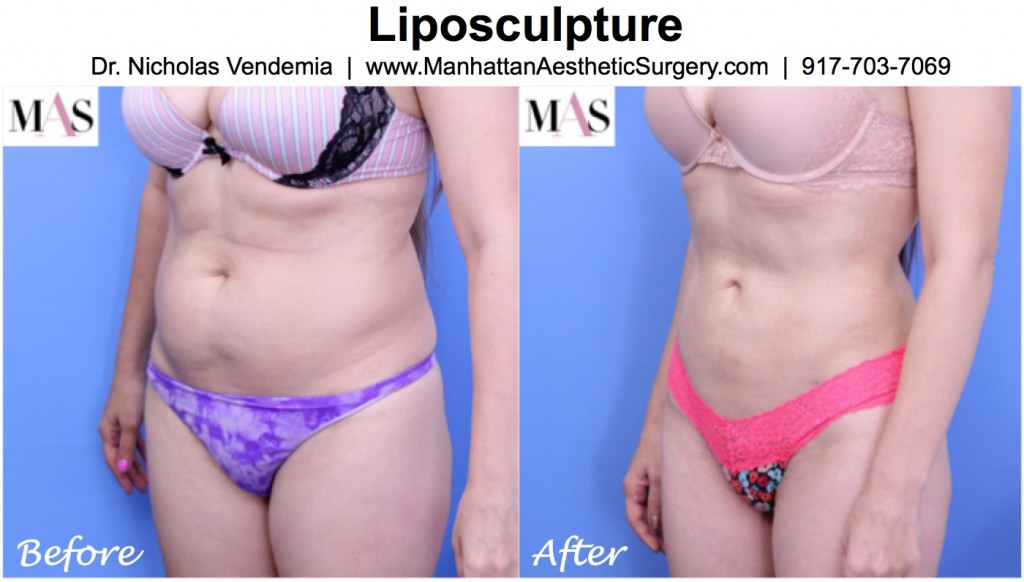 One of the most common questions we receive in our office is “What type of anesthesia is best for liposuction?”
One of the most common questions we receive in our office is “What type of anesthesia is best for liposuction?”
This is a very important question because there are a variety of options available for a variety of reasons, not all of which have safety and comfort at the top of the priority list. That’s not to say that the more expensive option is always the better option because that’s not always true, but your decision about which anesthesia method to select should not be based on price alone, nor should it be based on the myth that local anesthesia is always the safest method (this is also not always true). The best anesthesia for liposuction should provide a good balance between cost, comfort, safety, and affording your surgeon the ability to do the best job he can so you get the best result possible.
The best anesthesia method will allow all of the above to be possible, so there is no need to cut corners as long as you have the facts. Keep reading to learn more about the anesthesia options for liposuction and other cosmetic procedures…
Anesthesia Options for Liposuction:
- Local Anesthesia (Fully Awake). Local anesthesia means that the only anesthetic used will be injected under the skin on the parts of the body where the surgery will be performed. You will be fully awake during a local anesthesia procedure, and you will have to be able to tolerate the needles required to inject the anesthetic, which could be quite a few if you are doing a large area as is usually the case with liposuction. I do not find local anesthesia to be conducive to a good experience during liposuction cases because of the inevitable discomfort involved in the initial numbing process, and because many people (men and women) are usually not comfortable with the sensation of knowing what is going on around them (and to them) even after everything is numb. Local anesthesia takes away any painful sensations, but it does not remove the sensations of pressure, pulling and tugging, or intense heat. These sensations will be present during the procedure, and while they are not an issue for some, for others they can be quite uncomfortable and unnerving. In addition, local anesthesia doesn’t last forever. It starts to wear off in as little as 60 minutes in some patients, which is not enough time to produce a top-quality result in even a single area. Many surgeons find themselves rushing to get the procedure done before the local anesthetic wears off, and this leads to an unacceptably high rate of contour irregularities like grooves and lumps that require complex and expensive revisional procedures. The other thing to watch out for when a doctor or facility offers ONLY local anesthesia is that they made be giving you oral sedative medications during the procedure. Medications such as these can be quite dangerous if administered in high quantities, particularly if there is no trained anesthesiologist present to monitor your heart rate and breathing. In situations like this, “local anesthesia” can be quite a bit more dangerous than twilight anesthesia, so it is very much a myth that local anesthesia is always the safest option. It is usually the cheapest option, but definitely not always the safest, and never the most comfortable.
- Twilight Anesthesia. Twilight anesthesia includes local anesthetic described above, but takes it a step further by administering precise doses of intravenous anesthetic during the key portions of the procedure to minimize the discomfort during the injection phase, and your awareness of the sensations like pressure and heat that will still be noticeable with only local anesthesia. The main stay of most twilight anesthesia regimens is a medication called propofol, which has an overwhelmingly positive safety profile when used by trained anesthesiologists, and has a very low incidence of side effects. In fact, bothersome side effects like nausea, extreme drowsiness, and headaches are much more common with oral sedative medications that are almost always administered during “local anesthesia” cases in a less expensive attempt to take the place of twilight anesthetics like propofol. For twilight anesthesia to be done safety, it does require an anesthesiologist to be present, but the slightly higher cost that comes along with this easily offset by the extra safety of having this individual monitor your blood pressure, heart rate, and breathing during the surgery. Personally, I feel that twilight anesthesia is the best option for liposuction cases because I know my patients are being safely monitored by an expert while I’m concentrating 100% on doing the best job I can, I know they’re totally comfortable and not feeling a thing, and I know the revision rate will always be as low as possible because I don’t have to worry about the local anesthetic wearing off. It’s the best possible scenario for a procedure like this, and I think the nearly negligible additional cost buys you a nearly priceless additional amount of safety and comfort.
- General Anesthesia. General anesthesia is several steps above twilight anesthesia in terms of the number of medications administered, and how much monitoring is necessary. when you are under a general anesthetic you are completely sleeping with absolutely no awareness of your surroundings, and very close monitoring is required to control your vital signs and breathing. General anesthesia is not commonly used for most cosmetic surgical procedure nowadays because of the added cost, side effects, and risk, and because it simply not necessary for most of these kinds of procedures. Twilight anesthesia is a much more gentle and safer alternative that reduces awareness just enough to allow for a pleasant, truly pain-free experience. General anesthetic is rarely necessary for cosmetic surgery in my experience.
 Nicholas Vendemia, M.D.
Plastic Surgeon New York
Nicholas Vendemia, M.D.
Plastic Surgeon New YorkMASNewYork.com

